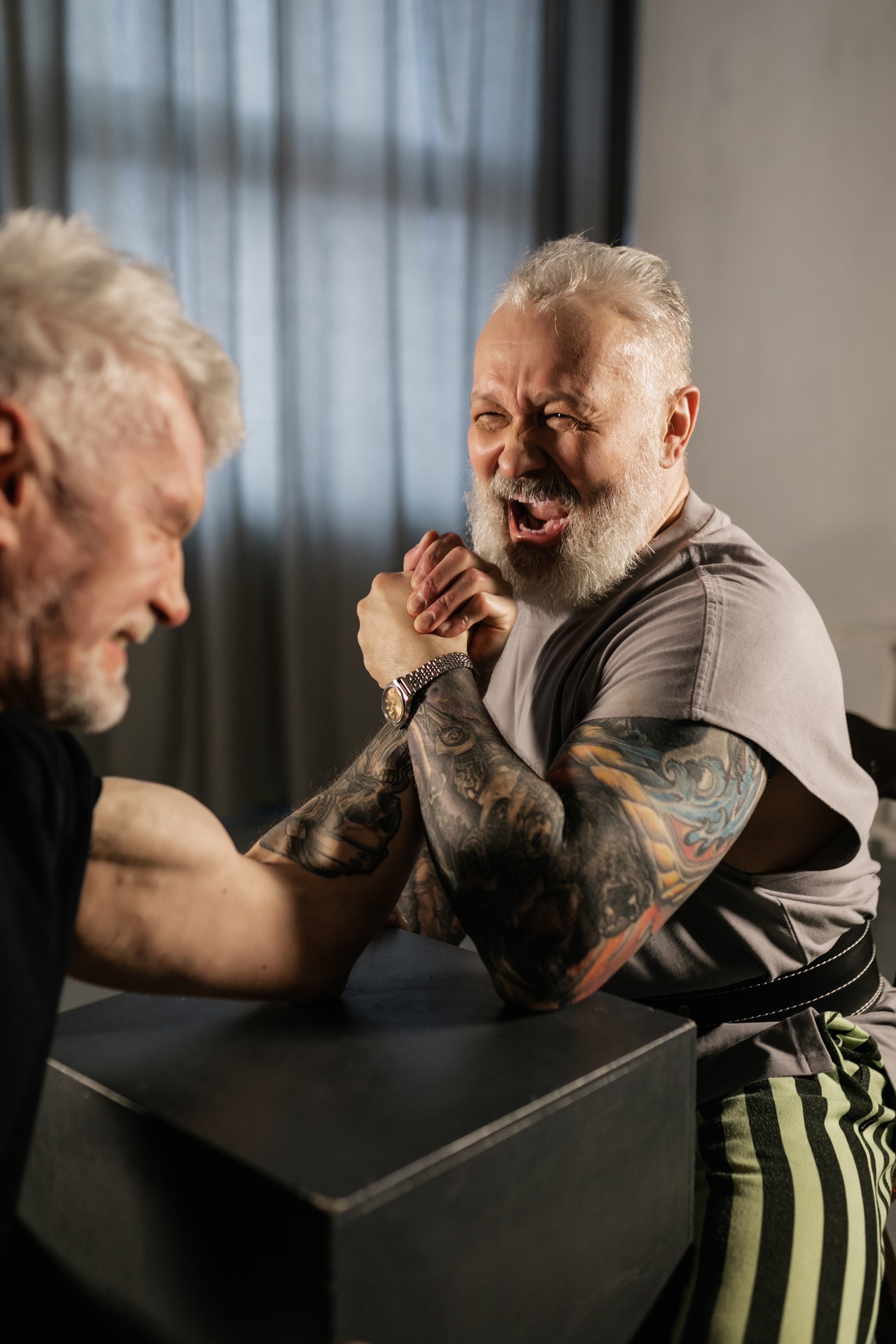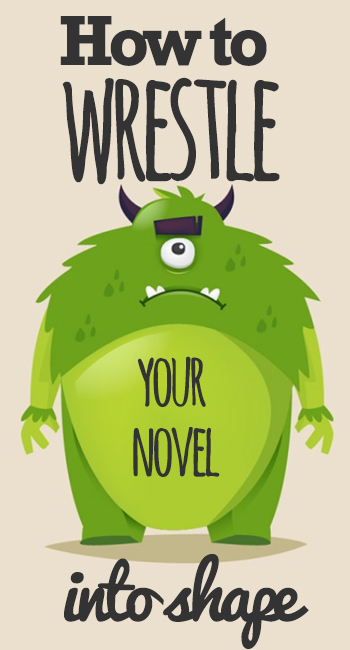
How to wrestle your novel into shape

This is a guest post by a novel factory user Ghostly, an earlier version of which was originally posted on our community noticeboard.
How do you set up this monster, this story that you want to wrestle – its character, setting, problem and plot?
Enter late and leave early
You can begin ‘in media res’, or in the ordinary world of the protagonist, or in the backstory (a good place to plant an unresolved mystery from the past).
In each case it is important to have figured out beforehand what your ‘theme’ is and leak it into that opening scene. Why? Because that is how you will end your story. You will conclude with a resolution of the theme. It is your promise to the reader. Starting ‘in media res’ is a hell of a way to ‘enter late and leave early’. You should enter every scene late and leave early.
Failure and Success
Then it is just a case of setting up an Intention – something that really matters to the protagonist, including what is at stake if the protagonist fails – followed by an Obstacle, which is followed by success or failure.
This will set up a new Intention, but naturally an Obstacle pops up and the protagonist either succeeds or fails at overcoming the obstacle.
Failure is good because it deepens the ‘nure that the Protagonist is in and it helps to make the reader care about the main character.
Success is also good because it shows the protagonist is capable of seeing this story through and can grow and change. Either success or failure helps to keep the reader’s focus on the main character/s.
The brilliant Kecia Bal says that she, “keeps a heart-racing pace with high stakes, swift twists, compelling questions, and, eventually, satisfying answers. I want readers to feel bound to the characters, and I want to surprise them – or scare them or charm them – on every page and keep them guessing until the last page.”
Character Essays
It is also a good idea to write – as each character – a 300 to 500 word essay in their own voice. It can be about anything – the story world – parents – friends – where your character is at in his or her life right now. Anything! But it must be in their own voice. This will help you get into the heads of your characters and also to keep their way of speaking clear in your mind.
Remember, you do not ever have to write dialect if you can write the speaking rhythms of each character and this is much clearer if they write something in their own voice. This keeps the intention/obstacle cycle much more real. These character essays would go into your research folder. You might add pictures and trivia to them.
Enter the unresolved question
An unresolved question about the future (suspense) is also a good idea – plant one early and let it run to the very end of the novel.
If it is appropriate also set up a puzzle at the beginning.
The main character intends to do something but is stymied by an obstacle of some sort and then does something about it (act) and either fails or succeeds.
Antagonists are people too
Of course this pattern of INTENTION>OBSTACLE>SUCCESS/FAILURE also applies to the antagonist – the character who has other ideas about how the story will turn out and has perfectly cogent reasons why it will turn out as the Antagonist intends.
Often the SUCCESS/FAILURE outcome of dealing with an obstacle is the exact opposite for the Antagonist.
So the scene with the:
- Protagonist may be – INTENTION > OBSTACLE>SUCCESS
- Antagonist would then be – INTENTION > OBSTACLE>FAILURE
And so on – swapping over as the story unfolds. (Win for Protagonist – then maybe another one and another one then a fail – as the Antagonist does a fail and succeed cycle.)
The Intention > Obstacle sequence
The sequence of INTENTION > OBSTACLE can be broken down further:
- AN INTENTION – something that really matters to the protagonist – what is at stake if the protagonist fails – and it had better matter.
results in a
- DILEMMA – ‘Will I? Won’t I, Can I? Should I?’ ‘If I do what is at stake for me (and the object of the dilemma – love one, golden wattle bloom, McGuffin)? ‘If I don’t what is at stake?’
- DECISION – ‘I know deep down this is what I should do – but I’m not up to a task that big. Oh hell, I’ll do it anyway.’ (There is no story if the protagonist wimps out.)
- ACTION – ‘Pick up the tools and get on with it – DO something – Go somewhere – Deceive someone – Make a cup of coffee’ – SOMETHING HAPPENS directly as a result of the earlier decision.
- HOOK or CLIFFHANGER – ‘Oh, Oh!’ Now I’m really in deep ‘nure. Should not have done that. Hanging here in space is not what I planned. What am I going to do now?’ Die? Nup!
- AN OBSTACLE – results in a
- HOOK – ‘Who is this evil so and so who is trying to kill me?’ What does she /he want? Why? Why pick on me? What is special about me
- NEW INTENTION (GOAL) – ‘I know, I’ll try (something else – a little more unexpected and risky this time – I’ll….’
- CONFLICT – ‘My mum wouldn’t have approved that. Now this guy/gal wants to stop me again. What can I conjure up now? Getting bopped on the noggin’ was not such a good idea after all.’ I’ll try THIS!
then
- FAILURE – OR – SUCCESS – ‘Crumbs! Back to the drawing board.’ OR ‘YES! That worked. Now let’s see what else this naughty person has up their sleeves.’ ‘Now I think I can DO this…’
Which leads to a new INTENTION.
And this cycle is repeated – sometimes with several fails before a succeed.
Aaron Sorkin uses the same Intention Obstacle theory to drive his screenplays. You can watch some videos of him talking about his craft here (for free):
https://www.indiefilmhustle.com/masterclass-aaron-sorkin-screenwriting/
Rising tension
It’s important that the jeopardy in the obstacles has to progressively increase.
Why? To make sure that things keep moving. Increasing jeopardy is an antidote for stasis in a story. It is critical to keep a story moving and increasing jeopardy is a great way to weave forward momentum into the fabric of the whole thing.
In summary
And there you have the sweep of your story.
Obviously you remain flexible and malleable about just how rigorously you follow this sequence. But at the end of the day you have your set of initial scenes – that you can develop framed by the theme.
So how do you start planning a story?
With the climax. Consider the point where the jeopardy has increased to the point that the goal appears impossible.
Then your characters can work towards that end, going through many steps where they intend to do something but are stymied by obstacles and must act and either fail or succeed.
The opening or start of a story is usually the last thing you write.
Three Questions
If that is too complicated, just remember David Mamet’s three questions:
1.) Who wants what from who? (consequences)
2.) What are they willing to do to get it? (stakes)
3.) Why now? (urgency)
